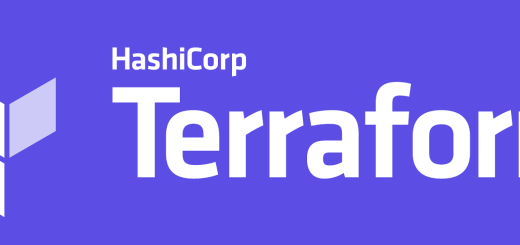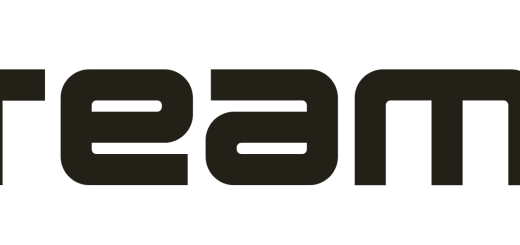What is VMware vSphere?
VMware vSphere is a suite of virtualization products that provides a powerful, reliable, and scalable platform for running your business-critical applications. vSphere helps you to realize the full potential of your IT infrastructure by providing comprehensive support for virtualization, management, and automation.
In this article, we will give you a high-level overview of VMware vSphere and explain what it can do for your business.

- VMware vSphere
To understand what VMware vSphere is, you need to understand what is a VMware hypervisor and what features ESXi virtual machines offer.
A hypervisor is the component of a virtualization technology that allows multiple guest operating systems, or virtual machines, to run on a physical server.
Considering a traditional server from the 1990s with an Intel 80286 CPU, 40MB of RAM, and 20MB hard disk space, this would be a hypervisor for a 16-bit personal computer.
However, as virtualization has advanced from a technology challenge to a necessity, hypervisors have moved from solutions for specific classes of client computers to almost essential utilities in any computer installation.
> Virtual machines provide a valuable way to distribute server roles to different physical servers to save money. ESXi virtual machines are recalled virtual machines stored inside virtual appliances you can install on your ESXi server.
To understand the skills needed in business, you can refer to this screenshot from YouStack.
2 . vSphere Best Practice
VMware vSphere provides a highly scalable, secure, and fully featured platform designed to help you meet your business’s challenges today and tomorrow.
However, implementing VMware vSphere can be a difficult and time-consuming process. To ease this process, various vSphere Best Practices have been developed. These best practices help you run your vSphere environment with minimal downtime. For example:
- Trust your Virtual Appliances (VMware vSphere) on a Common Platform (ESXi)
- Ensure Better Security with Built-in Security Features (NSX, VMware Guard, SDK, etc.)
- Perform better Containers on Containers (PKS)
- Secure and Optimize Docker Workloads
- Deploy Virtual Machines (VMWare, Citrix XenServer, Microsoft Hyper V, and others)
These best practices are essential tools for helping you become a better VMware vSphere administrator and maintain an optimal vSphere environment.
vSphere is VMware’s cloud infrastructure platform. It enables you to run efficiently, manage, connect, and secure applications across clouds and devices.
VMware vSphere Features
vSphere is VMware’s self-hosted private cloud computing platform. It enables users to run applications and store data on VMware-hosted servers in a secure, virtualized environment. This allows users to build, deploy, and scale applications quickly and efficiently.
One of the most important features of vSphere is its ability to provide centralized management for virtual machines. The vSphere standard edition has a vCenter Server Appliance (vCSA) that manages the VMware virtual infrastructure. It is a centralized, console-based management tool that allows you to provision and allocate resources quickly and with ease. vCenter Server offers four main functions:
VMware vSphere versions
VMware vSphere is a cloud computing platform initially released in 2001. vSphere enables users to run multiple virtual machines on a single physical server. This article will discuss the various features of VMware vSphere and how it can benefit businesses.
VMware vSphere was initially released in 2001 as VMware Infrastructure. The platform enables users to run multiple virtual machines on a single physical server. In 2009, VMware renamed the product to VMware vSphere, and in 2011 they released version 5.0 of the software.
VMware vSphere is currently in its 7th version, released in 2020
VMware vSphere pros and cons
vSphere is an enterprise-class virtualization platform from VMware. It enables companies to run their business-critical applications in a virtualized environment, improving efficiency and agility while reducing costs.
vSphere includes a comprehensive suite of tools for managing virtual machines, storage, and networking. It also offers advanced features such as vMotion, High Availability, and Fault Tolerance.
VMware vSphere can consolidate servers, virtualize and control them through a centralized management console. It supports various hardware platforms and provides a rich set of features, including HA, vMotion, vMotion, vSphere Replication, Fault Tolerance, Storage vMotion, Hot-Add, vSphere Data Protection, and vShield Endpoint. vSphere offers a rich set of features for managing and securing the hypervisor and physical servers. vSphere supports the following physical server platforms: x86, x64, ARM, IA-32, Power, EMC, Cisco UCS, IBM BladeCenter, HPE Integrity, Datapower, IBM NonStop, and Fujitsu. vSphere supports various virtualization platforms, including VMware vSphere, VMware vSphere with Operations Management, Microsoft Hyper-V, and Linux KVM. vSphere can be used to virtualize any operating system
VMWARE VSPHERE VS. VMWARE WORKSTATION
What is vSphere? This is a question we hear a lot, and the answer can be confusing. vSphere is a platform, but what kind of platform? It’s a platform for running applications, but it’s also a platform for managing data centers. And it’s also a platform for developing cloud-based applications. vSphere is all these things, but at its heart, it’s a platform for running applications. Vmware vsphere products VMware vsphere versiones
vSphere is a platform in the cloud that gives you the power to run your business-critical applications confidently. It enables you to build and run virtual machines and containers, and you can quickly move them around to different physical servers. vSphere provides a secure environment for running applications and helps you manage those applications. You can use vSphere to build, deploy, and scale cloud-based applications.vSphere is a platform for the cloud. It provides the tools necessary to build, deploy, and manage applications in the cloud.
How do vSphere, ESXi, and vCenter work together?
VMware vSphere is a cloud computing platform that enables users to run applications and virtual machines on a single physical server. VMware vSphere includes a suite of products that provide compute, storage, networking, and management features.
vSphere was first released in 2004 and has been one of the most popular cloud computing platforms ever since. VMware vSphere is used by organizations of all sizes to run their applications and virtual machines.
Difference between vSphere, ESXi and vCenter
This is a ubiquitous question, and I know why it happens. We are all a little confused as to what’s going on.
I think this will help you understand what is happening.
1. VSphere
I’ll start with the most common. VSphere is a software product that is used to manage virtual machines. It has a GUI (Graphical User Interface), which you can use to create a device and operate the machine.
Different people use it, so it is not used and is more of a product bought by companies.
2. ESXi
ESXi is the hypervisor that powers the VSphere. The hypervisor is the host, arguably the most essential part of the VSphere, and you use it to create virtual machines. It’s similar to some operating systems like Linux but specializes in virtualization. It is open source, and you can download it.
Your Top VMware Questions?
How do vSphere, ESXi, and vCenter work together?
vSphere, ESXi, and vCenter are not only a suite but also a set of components. vSphere component includes vCenter and ESXi. vCenter contains the vSphere client, vCenter web client, and vCenter Server. If you want to use the vSphere client, you must install vCenter on a Windows or Mac server.
In addition, ESXi is the hypervisor that can create virtual machines, including ESXi host, ESXi VM, and vSphere. You could manage the ESXi host in vCenter. vSphere is a complete management platform, which includes ESXi host, ESXi VM, and vCenter. In this section, you will learn the relationship between vSphere, ESXi, and vCenter.
For example, a server has two vSphere hosts. Therefore, when creating a new virtual machine, you must select the vSphere host and ESXi host.
Is vSphere Version 7 available?
Installation depends on the hardware in use, so a VM should try to select vSphere version 7 when it is not supported and the latest version. Otherwise, it ends up with an outdated version that results in several issues or incompatibility of setting with respective platforms.
How to resell vSphere?
According to the definition, reselling is an act of an organization that involves repairing actions, seeking to make profits by whatever means available. The reseller resells or sells products and services without direct contact with the original manufacturer or manufacturer. It involves buying and selling without the primary goal of making profits out of it or breaking contracts. Instead, the purpose is to distribute the products or services properly.
It is not a perfect term; there are many variations in how it is used in different aspects.
According to the technical know-how, c-level resellers are only about the company’s non-technical business and
What is vSphere Client, aka View Here?
vSphere Client is the tool that an organization uses to manage the vSphere environment. Some people do not need to pay attention to the vSphere Client because it works very well. But this is the wrong-of course; your organization must pay attention to the vSphere Client.
The vSphere Client enables you to manage VMware Infrastructure and ESXi hosts from a single interface.
It also enables you to use Quick-VMI, Power-Off, and Virtual Machine Manager (VMM) network virtual appliances by importing specific Virtual Machine images in the virtual device, migrating virtual machines between hosts, and more.
It helps an organization manage its VMware Infrastructure.
Can I use vCenter for my purpose?
vCenter is a PC, server, and network control software product backed by VMware. It is used to manage servers, configure network devices, and visualize servers and resources by presenting virtual desktops and storage.
VCenter solutions integrate and manage virtual desktops, compute and storage resources, networking, and other virtual infrastructure.
You can use it as an aspect of the live installation and deployment of vSphere products to start and provision products like virtual machines and storage to make deployments more accessible and faster.




4 Responses
[…] migrate is the product used to migrate HyperV, VMware, Physical, and Other Cloud servers into Azure. Each migration must have a project; you can either […]
[…] 2.0 is a GitHub repository that provides a PowerShell script designed to capture and visualize a VMware infrastructure in Microsoft Visio. The project is an extension of Alan Renouf’s original vDiagram and is […]
[…] cheat sheets are to be used on the VMware platform. Some VMware oneliners require PowerCLI; others can be run directly on the Photon OS on your ESX […]
[…] of performing a bare metal restore for a Linux server into VMware. While this example focuses on VMware, the principles can be applied to a physical server as […]